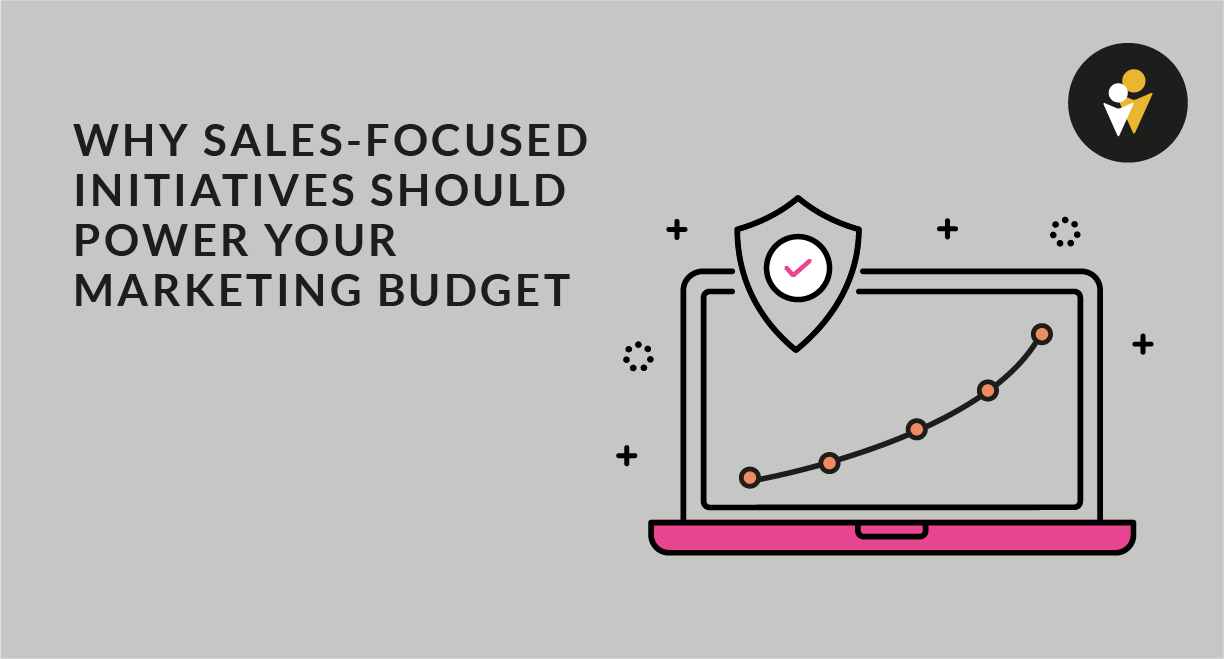Optimizing your Approach with Sales-Focused Marketing
It’s a frustrating pattern many marketing teams know too well: Budget requests for brand awareness campaigns get questioned or cut, while sales-driven initiatives tied directly to revenue growth get fast-tracked for approval.
Why? Because when leadership sees a clear path to revenue, they open the checkbook.
If marketers want to protect and grow their budgets, they need to rethink how they propose projects. It's not enough to talk about engagement or impressions. Your marketing initiatives must align with sales goals and demonstrate measurable revenue potential from the start.
In this article, we’ll walk through why sales-focused marketing is essential for budget success, how to align with your sales team, and the strategies you can implement today to create more revenue-driven marketing — and finally win the internal support you deserve.
The Marketing Budget Challenge
Marketing budgets can often be a source of contention. With traditional marketing efforts, such as brand awareness and engagement, you can have an incredibly successful quarter but find that you have no metrics for direct revenue you promoted. Sales-focused marketing, however, ties your efforts directly to financial performance.
By making this connection you can leverage data analytics to showcase how marketing efforts contribute and solidify your role as a revenue driver. which will help to increase investment.
Shifting Paradigms: From Marketing to Sales-Driven Initiatives
When you shift to sales-focused marketing you are changing the entire approach of your business. Marketing is now part of the sales process. Both teams must work together to align marketing and sales objectives otherwise your efforts will lack follow-through, and your sales team will feel overburdened.
However, when you work together you will find that you can lead more targeted campaigns, increase inbound leads, improve lead nurturing, and promote your sales team’s ability to sell.
Crafting a Compelling Case for Sales-Focused Marketing
This can be a large change for your business and large changes often require advocacy. Data on revenue impacts and case studies can be an invaluable tool for showcasing the benefits of change. Take for example Account-Based Marketing (ABM), a strong sales-focused marketing initiative based on making personalized content strategies for targeted accounts.
By running an ABM campaign, you can market directly to your target audience and set up your sales team for success with those clients. Consider if, when pitching sales-focused marketing, you have a list of 20 target companies and 40 target contacts to whom you are targeting your marketing, and predict that the focused marketing could create $1M+ in new pipeline for sales. Not only would that intrigue the executives approving the budget, but also the sales team. After all, who doesn’t want their job to get easier?
When you put your sales and marketing teams hand-in-hand you ensure that target accounts become customers in the smoothest way possible.
Strategic Approaches in Sales-Focused Marketing
With the company supporting your team, you want to create an optimized plan. The first step is to align marketing campaigns to real revenue goals — like boosting qualified sales pipeline volume or reducing sales cycle length. Communication between marketing and sales is crucial to setting goals and receiving data on your efforts.
You learn nothing about your efforts without measurable metrics. The data you gain will not only assist in supporting budget requests but can also shape your campaigns. Utilizing tools to track your success will give you valuable information. For example, knowing where your website traffic is coming from (Google ads, social media, LinkedIn) can help you know what strategies are succeeding and what strategies need adjustment. Measurable metrics will save you time, money, and energy that can instead be used toward accomplishing goals.
Understanding your customers’ journey is a key piece to an effective strategy. You are the solution to a problem your customer is facing; however, if you wait until your customer is looking for a solution, you’re late. You need to walk alongside your customer from the beginning. We implement The Hero Mission Strategy® as the best way to connect with your customers and create content for them before they even know they have a problem.
Implementing Sales-Focused Strategies in Your Business
As you shift to a sales-focused strategy.
There are important things to keep in mind:
- Regular Communication - As you collaborate with your sales team it is important to have open dialogue and regular meetings to ensure alignment and growth. You can also use this time to set objectives and goals
- Utilize CRM Tools – Customer Relationship Management tools, such as HubSpot, can make all the difference in the world. Your CRM can track engagement, sales, and do a lot of heavy lifting for you. A CRM is especially important in sales-focused marketing, as you can keep your entire company up-to-date on marketing and sales activity without sending a single message.
- The average CRM user adoption among sales professionals is 72%, and the average ROI period is 12 months. (Source: G2’s Winter 2025 Grid® Report for CRM)
- The average return on investment for CRM is $8.71 for every dollar spent. (Source: Nucleus Research)
- We recommend HubSpot in most situations and can help you get started.
- The average CRM user adoption among sales professionals is 72%, and the average ROI period is 12 months. (Source: G2’s Winter 2025 Grid® Report for CRM)
- Develop Targeted Content – Build a mini-campaign around your top five sales objections, and send retargeted LinkedIn ads addressing each one directly.
Evaluating the Impact of Your Sales-Focused Marketing
Measuring your success is crucial for improving and adjusting your strategies. Tie Key Performance Indicators (KPIs) directly to sales outcomes. Don't just track clicks — track pipeline influence, closed-won deals, and average deal size growth.
Some metrics such as lead conversion rates and customer acquisition costs would be a great place to start. But implementing customer feedback loops will help you to gain insights you wouldn’t otherwise.
To learn more about KPIs and choosing the right ones, check out our article Why KPI Performance Tracking is Crucial for Growth Marketing.
Getting Started with a Sales-focused Marketing Approach
Don’t let another marketing project stall out because it isn’t tied to revenue. Shift your approach — align with sales, focus on measurable outcomes, and build marketing campaigns that leadership can't wait to approve.
At PIC, we help marketing teams design sales-supported, revenue-driven programs that earn executive buy-in and fuel real business growth.
















